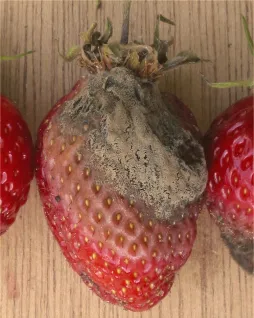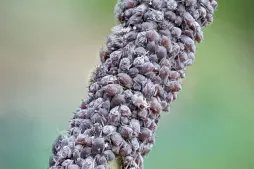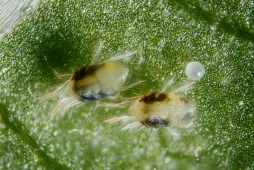Aphelandra squarrosa 'Dania', a multicolored zebra plant
Nature has created at least 200 varieties of Aphelandra. But this diversity wasn't enough for scientists and collectors. So they developed cultivars. One of these is Aphelandra squarrosa 'Dania'. This zebra plant has all the advantages of the botanical variety, but in a reduced size.
How to recognize the zebra plant, Aphelandra squarrosa 'Dania'?
Smaller than its cousins aphelandra aurantiaca and aphelandra sinclairiana, Aphelandra squarrosa 'Dania' measures 40 centimetres in all directions. It is an herbaceous plant with an upright, compact habit.
Opposite leaves grow on fleshy petioles and stems. Elliptical, with pointed apices. The shiny, dark-green blades are criss-crossed with creamy-white veins.
In summer, a floral spike lights up the foliage. It's made up of bright yellow or orange interlocking bracts. They host tubular yellow flowers. While the flowers last only a few days, the bracts display their colors for six weeks.
Like many cultivars, Aphelandra squarrosa 'Dania' is sterile. It bears neither fruit nor seeds.
Aphelandra squarrosa is non-toxic. Some studies even claim that it has depolluting properties.
Our maintenance tips
Aphelandra squarrosa 'Dania are reserved for experienced gardeners. To keep them alive, you'll need to find the right balance of watering, light and heat.
Watering
Aphelandra squarrosa 'Dania likes to keep its potting soil constantly moist. Don't wait for the substrate to dry on the surface before watering.
Water the soil with rainwater at room temperature. Don't use hard water, as it could kill your plant.
Soak the root ball until water runs off through the drainage holes. Drain off any excess water.
Drain any stagnant water from the planter or saucer to prevent root rot.
Spray
Spraying foliage with water at room temperature improves humidity and reduces the risk of pest attack.
Mist the leaves with non-calcareous water, such as rainwater or demineralized water. Limescale leaves white marks on the leaf blades.
Mist the leaves with non-calcareous water, such as rainwater or demineralized water. Limescale leaves white marks on the leaf blades.
Repotting
Every spring, repot your Aphelandra squarrosa ‘Dania’ to give it more space.
Obtain a perforated pot. Line the bottom with clay balls or gravel to improve drainage.
Then pour in a layer of potting soil for green plants. You can lighten it with a little river sand or vermiculite. Plant your Aphelandra squarrosa 'Dania in the center and fill the pot with the substrate.
Water copiously to ensure the roots adhere to the soil.
You can place the pot on a saucer of moist clay balls to increase humidity.
Fertilization
To promote the growth of your Aphelandra squarrosa ‘Dania’, apply fertilizer in spring and summer.
Aphelandra squarrosa 'Dania are greedy plants. Feed them with a flowering plant fertilizer to support their growth.
Cleaning
The dust that accumulates on foliage hinders photosynthesis and the growth of your Aphelandra squarrosa 'Dania. You can remove it with a damp cloth or clean sponge.
Prune
Using clean, sharp pruning shears, remove damaged or dried-out foliage.
Cutting
Cutting is carried out during the strong growth phase, generally in spring and early summer.
Cut a stem about ten centimeters long, just above a node. Use clean, sharp scissors or pruning shears. In some specimens, stems lignify over time.
When you take your cutting, choose a portion that is still supple and will root easily.
When you take your cutting, choose a portion that is still supple and will root easily.
Plant your graft in a pierced pot lined witha rich, light substrate, such as potting soil with sand.
Install the cutting in a mini greenhouse. If you don't have one, you can cover it with a translucent bottle. Remember to aerate regularly and mist the soil if it dries out.
Wintering
To flower, your plant must experience a drop in temperature.
Install aphelandra squarrosa 'Dania in a bright room where the temperature is between 15° and 18°. Choose a location away from draughts and direct sunlight.
During this period, stop fertilizing and reduce watering frequency.
During this period, stop fertilizing and reduce watering frequency.
Diseases / Threats
Information
| Family | Acanthaceae - Acanthaceae |
| Type | Aphelandra - Aphelandra |
| Species | Zebra plant - Aphelandra squarrosa |
| Lifecycle | Perennial |
| Foliage | Evergreen |
| Exposure | |
| Substrat | |
| Planting method |
In pots |
| Categories | |
| Tags |
Flowery Fritillary Soiffarde |
| Origin |
South America |
| Hardiness (USDA) | 11b |
| Leaf color |
|
| Flower colors |
|
Discover plants from the same family
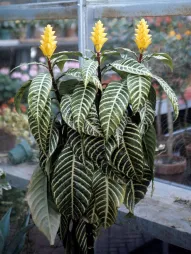
Zebra plant
Discover
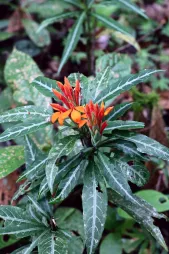
Burning spike
Discover
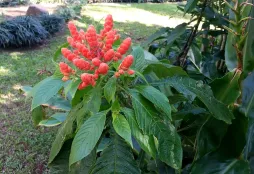
Aphelandra sinclairiana
Discover
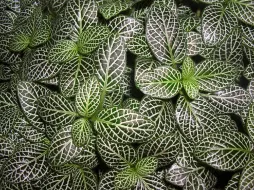
Fittonia albivenis
Discover














